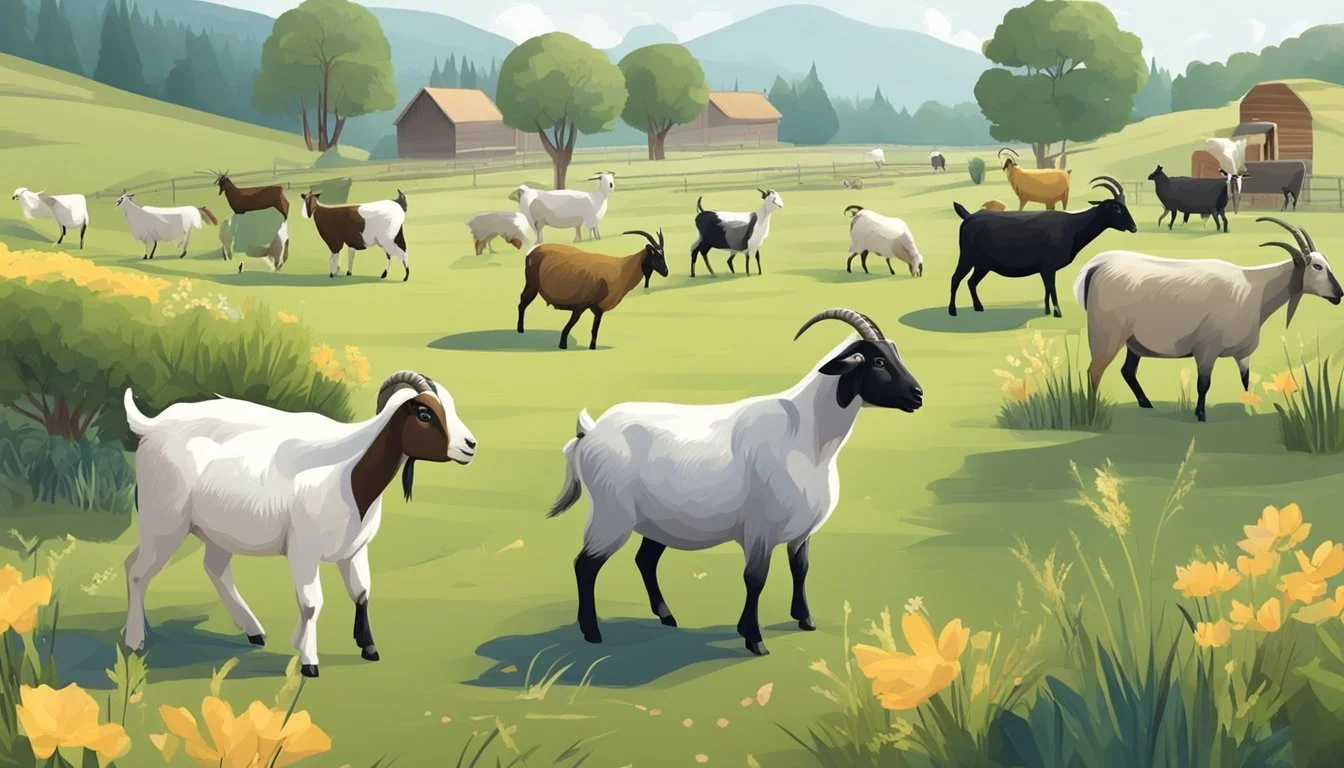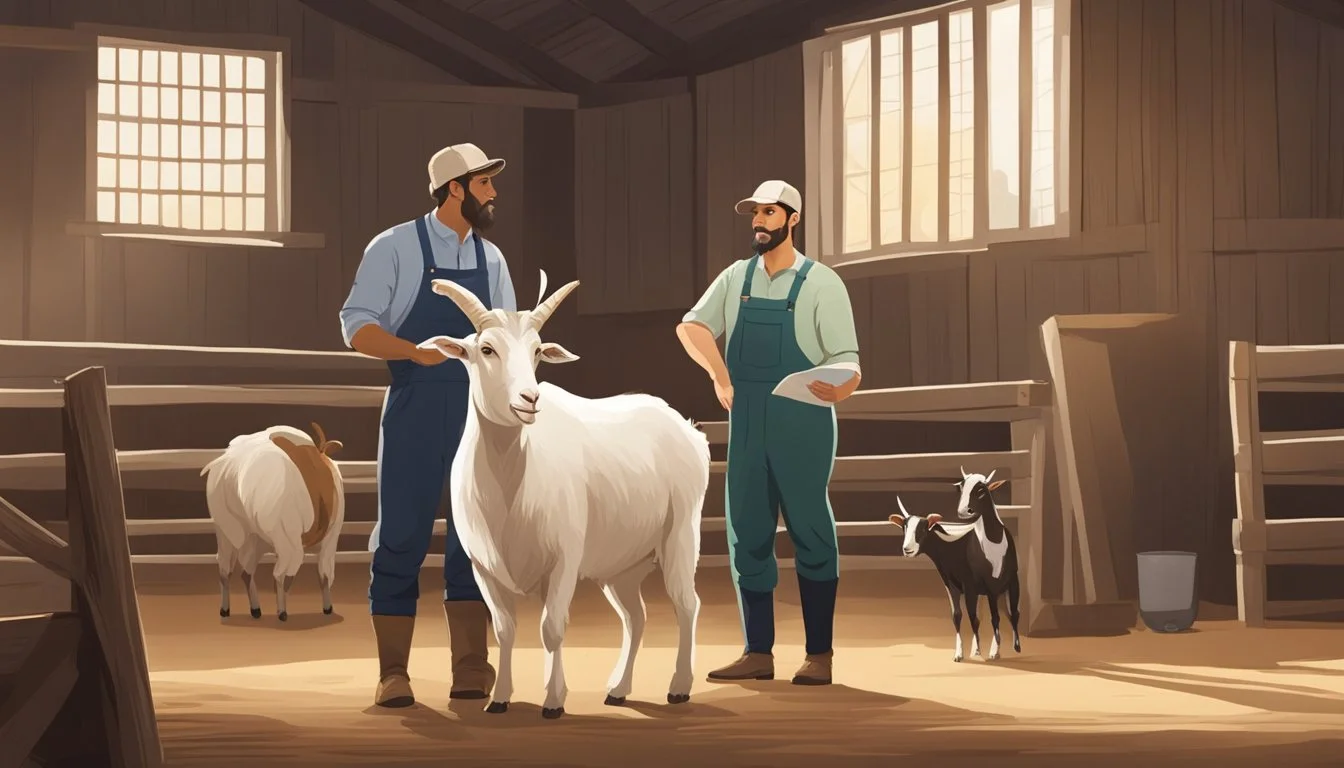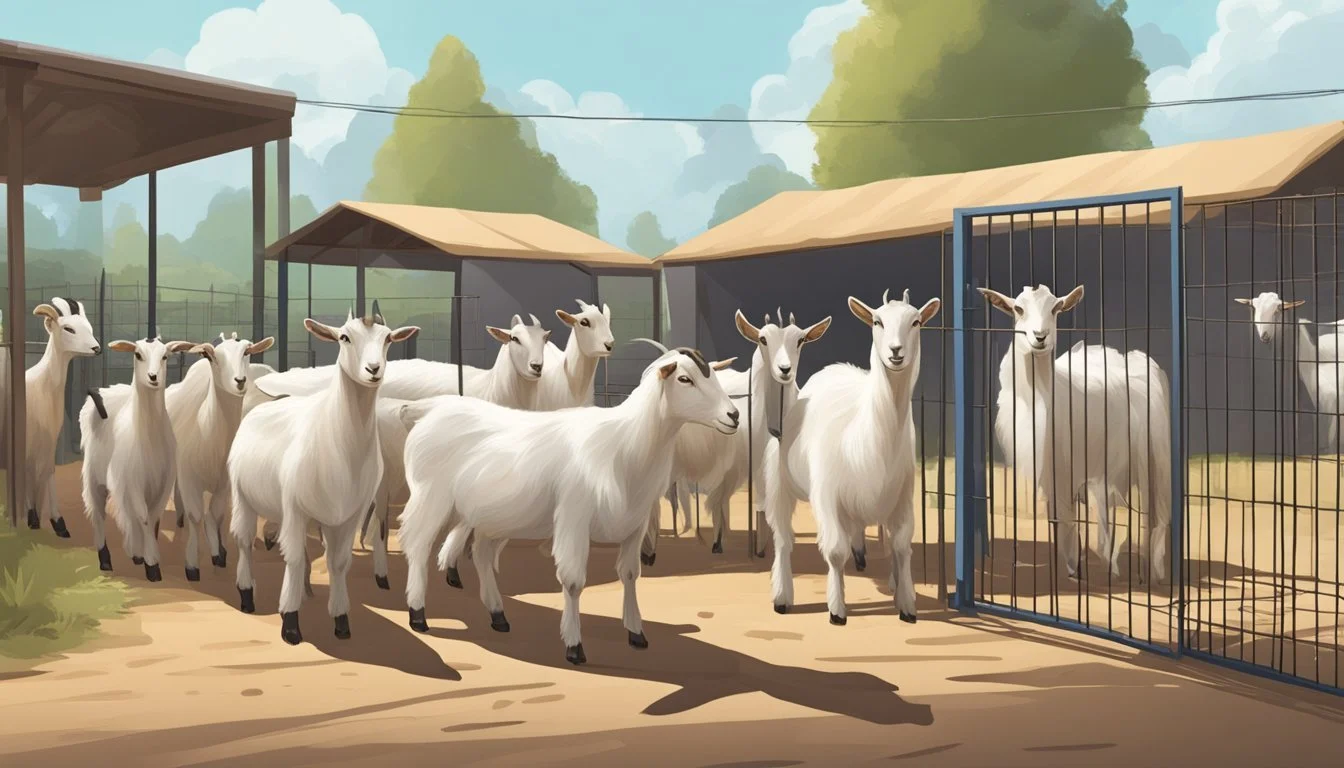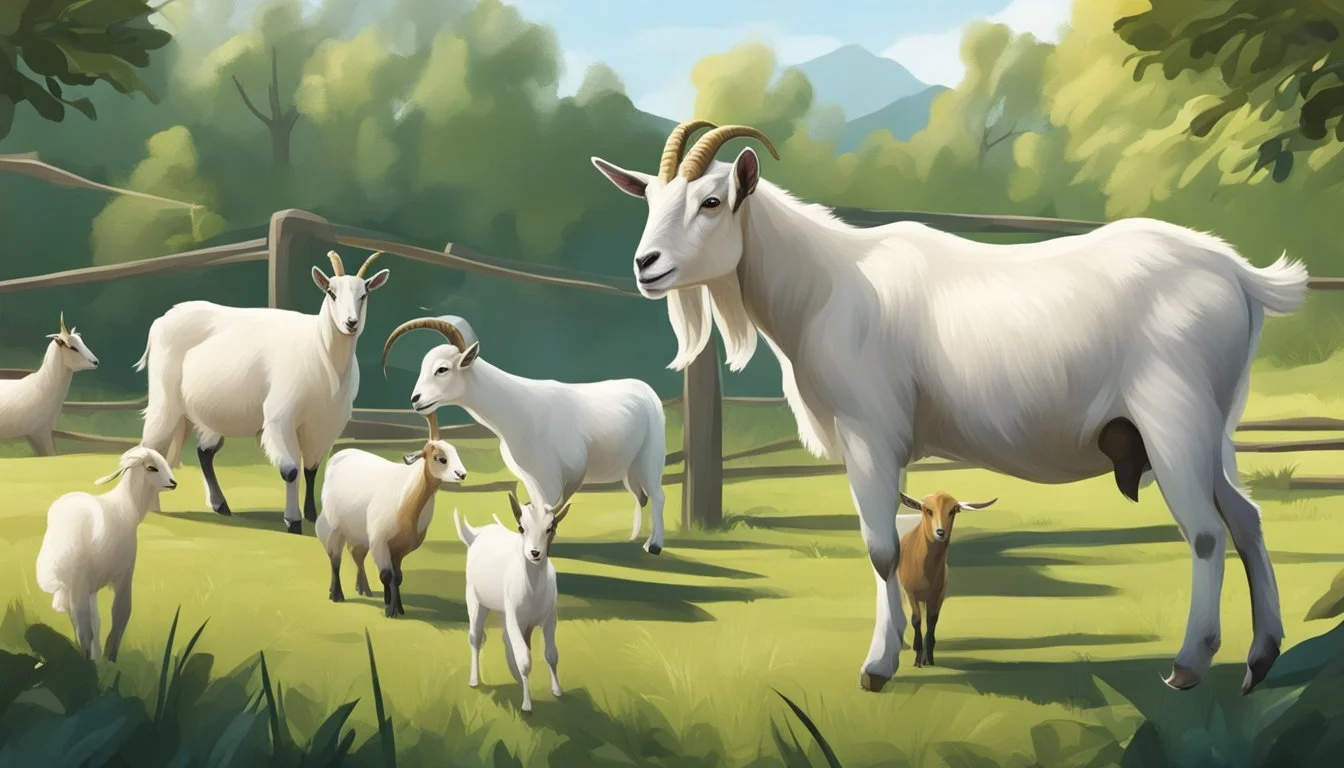Can I Crossbreed Different Types of Goats
Key Considerations for Successful Hybridization
Crossbreeding goats has the potential to combine the strengths and characteristics of two distinct breeds into a single herd. Whether it's to enhance milk production, improve meat quality, or create a hardier breed, the process involves mating goats from different genetic backgrounds with deliberate care. Breeders often select individuals based on specific traits they desire in the offspring, such as size, temperament, resistance to disease, or adaptability to environmental conditions.
However, successful crossbreeding requires careful consideration of each breed's qualities and how they might interact. Understanding the genetics behind goat breeds is crucial, as certain traits—both desirable and unwanted—can be inherited. It's essential to know the typical characteristics of breeds like the Nigerian Dwarfs and Boers to anticipate how their crossbred progeny might perform in terms of milk yield, growth rate, or even physical characteristics like the distinctive upright ears often seen in Nubian Alpine Cross goats.
In practice, goat crossbreeding is not without its challenges. Breeding decisions must account for the animals' well-being and consider the ethical implications of creating hybrids. Striking a balance between improving breed qualities and maintaining genetic diversity is vital to avoid potential drawbacks. This balance ensures that the resulting animals are both functional and fit, thriving in their designated roles on the farm or homestead.
Understanding Goat Breeds
When exploring the diverse world of caprines, particular attention is given to the distinct traits and utility of different goat breeds. With a vast array of breeds tailored for dairy, meat, or fiber production, understanding these breeds is paramount for effective goat husbandry.
Characteristics of Common Breeds
Dairy goats such as Saanen, Alpine, Nigerian Dwarf, LaMancha, and Oberhasli, are bred for their milk production capabilities. The Saanen breed is recognized for its high milk yield, robust frame, and adaptability to various climatic conditions. In contrast, the Alpine goat is valued for its excellent milk production and genetic diversity. For those with limited space, the Nigerian Dwarf goat is an ideal choice, offering rich milk with high butterfat content despite its smaller size.
On the other end of the spectrum are meat goat breeds like Boer, Kiko, and Spanish goats. The Boer goat is known for fast growth rates and a high-quality carcass, making it a popular choice in the meat industry. The Kiko breed, originating from New Zealand, is prized for its hardiness and meat yield. It is a breed that has garnered attention for its ability to thrive with minimal management.
Purebred vs Crossbreed
The choice between purebred and crossbred goats is a crucial decision for breeders. A purebred, such as a Nubian or Toggenburg, offers predictability in traits and is often preferred for establishing and maintaining a heritage line. These breeds can often be tracked through organizations like the American Goat Society, which provides breed resources and registration capabilities.
Conversely, crossbreeding can introduce hybrid vigor and combine desirable traits from two different breeds. For instance, a purebred Sable dairy goat might be crossbred with a LaMancha to augment milk production qualities and improve the hardiness of the offspring. Crossbreeding requires a strategic approach, factoring in the genetic traits, adaptability, and the long-term goals for the herd's productivity. It leverages the strengths of various breeds to achieve a specific objective, whether for milk yield, meat production, or disease resistance.
The Crossbreeding Process
Crossbreeding different types of goats can be a strategic approach to enhancing certain traits such as milk production, meat quality, or adaptability. It requires careful consideration of each parent goat's characteristics and the goals of the breeding program.
Choosing Parent Goats
The selection of parent goats, or dam (doe) and sire (buck), is a crucial first step in the crossbreeding process. This involves assessing the breed standard and reproductive performance to ensure that both parents exhibit the desired traits. The doe should come from a lineage with strong maternal abilities, while the buck should possess the traits one aims to improve or introduce. Genetic health and diversity are also consideration points to avoid inbreeding and to enhance hybrid vigor.
One must conduct thorough evaluations and often utilize culling to remove individuals from the breeding population that do not meet the criteria. This strategic selection helps to maintain a robust genetic pool and improve the overall quality of the offspring.
Breeding Program Design
Designing a breeding program requires a systematic approach to deciding which breeding strategies to employ. Linebreeding can be used to concentrate the genetics of a particularly valuable ancestor, while maintaining a high degree of genetic diversity to prevent negative effects of inbreeding depression. This must be balanced to avoid excess culling which could reduce genetic diversity.
A detailed program should outline the specific goals, the role of each breed involved, and the method of tracking and evaluating the success of the program. Through this design, breeders aim to establish clear objectives, be it for enhanced milk production, growth rate, or other specific traits, and plan for sustainable long-term improvement.
Genetics and Heritage
In goat breeding, the genetic makeup and the historical lineage of the breeds are pivotal in achieving desirable traits. It influences their adaptability, health, and productivity. Consideration of heterosis, preservation of genetic diversity, and prevention of genetic deformities are essential.
Understanding Heterosis
Heterosis, or hybrid vigor, refers to the phenomenon where crossbred animals exhibit enhanced biological qualities compared to their purebred parents. This occurs due to the combining of diverse genotypes, which often leads to offspring that are hardier and more fertile. When implementing crossbreeding strategies, one aims to capitalize on this effect to improve traits such as milk production, growth rates, or environmental tolerance. However, it is crucial to carefully choose the parent breeds to ensure compatibility and the desired heterosis outcome.
Maintaining Genetic Diversity
The gene pool of a species is its entire set of genetic variations. For goats, maintaining a broad gene pool ensures that breeds can adapt to changing environments and resist diseases. Overemphasis on certain traits can narrow the gene pool, risking the breed's future adaptability. Breeders must remember the importance of genetic diversity within populations, as indigenous goats have been shown to adapt to local environments more effectively than more specialized breeds. By carefully selecting which individuals to mate, breeders can conserve the balance of traits present within a breed's genotype and thus maintain its heritage.
Preventing Genetic Deformities
Crossbreeding can sometimes lead to unintended consequences, such as genetic deformities, particularly when individuals are closely related or when there's a lack of understanding about the underlying genetic traits. Meticulous breeding practices are key to mitigating such risks. This includes familiarization with the genetic profiles of the breeding stock to prevent the reinforcement of recessive genes that might lead to health issues. Breeders must remain vigilant about the genetic history of purebreds involved in crossbreeding efforts to minimize the incidence of deleterious traits in their offspring.
Health and Wellness Considerations
When crossbreeding different types of goats, it's crucial to consider how the resulting hybrids will fare in terms of health and wellness. This includes their resistance to diseases and parasites, specific nutritional needs to achieve optimal growth, and the environmental and social factors that impact their overall wellbeing.
Disease and Parasite Resistance
Different goat breeds may have varying levels of resistance to certain diseases and parasites. When crossbreeding, it is important to understand the health history of the parent breeds. For example, some breeds may have genetic predispositions that afford them natural immunity to particular conditions, whereas others might be more susceptible. Choosing breeds that complement each other can enhance the resilience of the offspring.
Nutritional Requirements and Growth
Crossbreed goats may have nutritional requirements that differ from their parent breeds, affecting their growth and overall health. They need a balanced diet composed of adequate fiber, which is essential for proper rumen function, and at least 7% dietary crude protein for normal bacterial growth within the rumen. The diet must also account for the energy needs for growth, particularly for kids, which often require higher nutritional content. Feed availability and quality, including access to browse and water, are fundamental for their development. Ensuring that the crossbreed can thrive on the available feed sources is key, as outlined by the Open Sanctuary Project.
Environmental and Social Factors
Goats are social animals and their health is influenced by their environment and the social group they are part of. A clean, well-ventilated shelter that protects them from extreme weather conditions is necessary. Overcrowding can lead to increased stress and the spread of diseases. Adequate space for browsing and exercise is important, as it not only satisfies their natural instincts but also contributes to physical health and prevents obesity. Providing an environment where goats can express natural behaviors is a significant aspect of their wellness.
Benefits and Risks of Crossbreeding
Crossbreeding different types of goats can lead to enhanced productive traits, such as increased milk and meat production, while also presenting certain challenges that require thoughtful management strategies.
Enhanced Production Traits
Crossbreeding goats can result in offspring with improved fitness and survivability, which are important aspects for herd resilience. For instance, crossbred goats may exhibit heterosis or hybrid vigor, enhancing traits like milk production and meat production. This process can also lead to new breeds with a composite of strengths, capitalizing on breed complementarity—where one breed's strengths can compensate for another's weaknesses.
Milk Production: By carefully selecting breeds known for high milk yield and quality, crossbreeding can create goats more efficient in milk production.
Meat Production: Crossbreeding can also be used to improve carcass quality and growth rates, thus benefiting meat production endeavors.
Potential Challenges and Solutions
Although the benefits can be numerous, crossbreeding goats also introduces challenges, including the potential for unintended weaknesses and the complexity of managing different genetic lines. To mitigate these risks, they must implement strategic breeding plans that consider the long-term implications and maintain desired traits in the gene pool.
Management Challenges: The presence of various breeds requires more comprehensive breeding records and a deeper understanding of genetics.
Inconsistency in Offspring: Produce offspring with a mix of traits, which can sometimes lead to unpredictable results. They can address this by selective breeding and aiming to upgrade herds through controlled crossbreeding.
Sustainability: They should also consider the sustainability of newly created breeds, ensuring they can thrive in specific environments without excessive inputs.
By weighing these benefits and risks, goat producers can determine the proper crossbreeding strategy suited to their goals, whether for commercial production or genetic diversification.
Practical Management and Care
Managing a diverse goat herd requires thorough consideration of housing, social dynamics, and the rearing of youngstock. Each aspect is crucial to ensure the health and productivity when crossbreeding goats for traits such as increased carcass quality or upgrading certain herds.
Housing and Space Requirements
Housing should protect goats from the elements and predators while allowing for their natural browsing behavior. They require dry, ventilated, and draft-free shelters. Space is critical; goats need adequate room to avoid stress and promote well-being. A rule of thumb for housing space is a minimum of 20 square feet per adult goat.
Fencing must be secure not only to keep goats safe but also to maintain selective breeding programs with purebred parents and crossbred offspring. It's recommended to use fencing that prevents kids from escaping and also deters predators.
Flock Dynamics and Behavior
Understanding flock dynamics is key when managing a crossbreeding program. Goats establish a social hierarchy that can affect breeding behavior. Careful observation and management are required to ensure that stronger goats, such as dominant rams, do not bully others and that breeding occurs as planned.
It's also important to manage breeding behavior to ensure that desired traits are passed on. During breeding season, separate bucks from does until the optimal time for controlled mating. This helps to manage the herd's genetic flow and maintain desired strengths in the offspring.
Raising and Training Youngstock
When raising goats, especially crossbreeds, the early training of kids is as important as their genetic heritage. Training involves handling and socialization, which contribute to their health and manageability. Starting this process early will integrate them smoothly into the herd.
Selective culling based on traits such as temperament and physical health helps to improve the overall quality of the herd. Moreover, when it comes to raising crossbred kids, recognizing and reinforcing the strengths from both purebred parents can define the success of the herd's future.
Economic and Market Considerations
When considering crossbreeding goats, one must take into account the economic implications and market trends that directly affect profitability and the sale of goat products. These factors guide decisions towards the most lucrative and sustainable breeding practices.
Cost Analysis and Profit Potential
Crossbreeding goats can impact the profit potential of a livestock enterprise. An essential consideration is the initial investment in diverse breeding stock. Crossbreed goats often bring certain economic advantages due to superior traits such as faster growth rates or improved milk production. For example, crossbreeding local goats with specific breeds may enhance meat quality, meeting market preferences and potentially fetching higher prices.
The costs involved include not just the purchase of breeding stock, but also veterinary care, feed, housing, and labor. Farmers must calculate the expected return on investment (ROI) over time, considering these expenses against the potential increase in income due to enhanced production traits.
Market Demand and Sale Opportunities
Market demand is a fluctuating entity that must be deeply understood. Crossbred goats can offer unique selling points—like rich milk for cheese production or quality meat—that purebreds may not provide. For instance, the introduction of non-seasonal breeders can yield a year-round supply of kids, thus meeting constant market demand.
Farmers should also assess sale opportunities for offspring, considering factors such as locale and prevalent cultures or cuisines. Some regions may favor specific goat products or have established markets for certain goat types. It is imperious for farmers to align their crossbreeding strategies with these demand trends to ensure sustainable sale and profit margins.
Ethical and Sustainable Breeding
In the realm of goat crossbreeding, the core principles revolve around the ethical treatment of animals and minimizing the environmental impact. These factors ensure the overall health of the herd and contribute to sustainable farming practices.
Welfare and Ethical Treatment of Animals
When crossbreeding different types of goats, ethical considerations are paramount. Breeders must prioritize the animal welfare by ensuring that the breeding practices do not cause harm or undue stress to the animals involved. According to the insights gathered from Ethics in animal breeding, maintaining the animals' true physical characteristics and natural behaviors is essential, as is selecting for healthy qualities in offspring. Furthermore, the breeding process, including mating and nurturing of young, should align with high welfare standards to prevent any detrimental genetic outcomes that could affect the animals' quality of life.
Sustainability and Environmental Impact
Sustainability in goat breeding not only refers to long-term productivity but also includes an awareness of the environmental impact. This means choosing breeding strategies that align with the ecosystem and are beneficial to both the land and the animals. The use of sustainable practices, such as selecting breeds that thrive in local conditions or feeding practices that minimize waste, is important, as emphasized in The Ethical Goat Farmer: Animal Welfare and Sustainable Practices. These practices help reduce the carbon footprint of farming operations, conserve natural resources, and ensure that the genetic diversity within the goat populations can be maintained for future generations.






